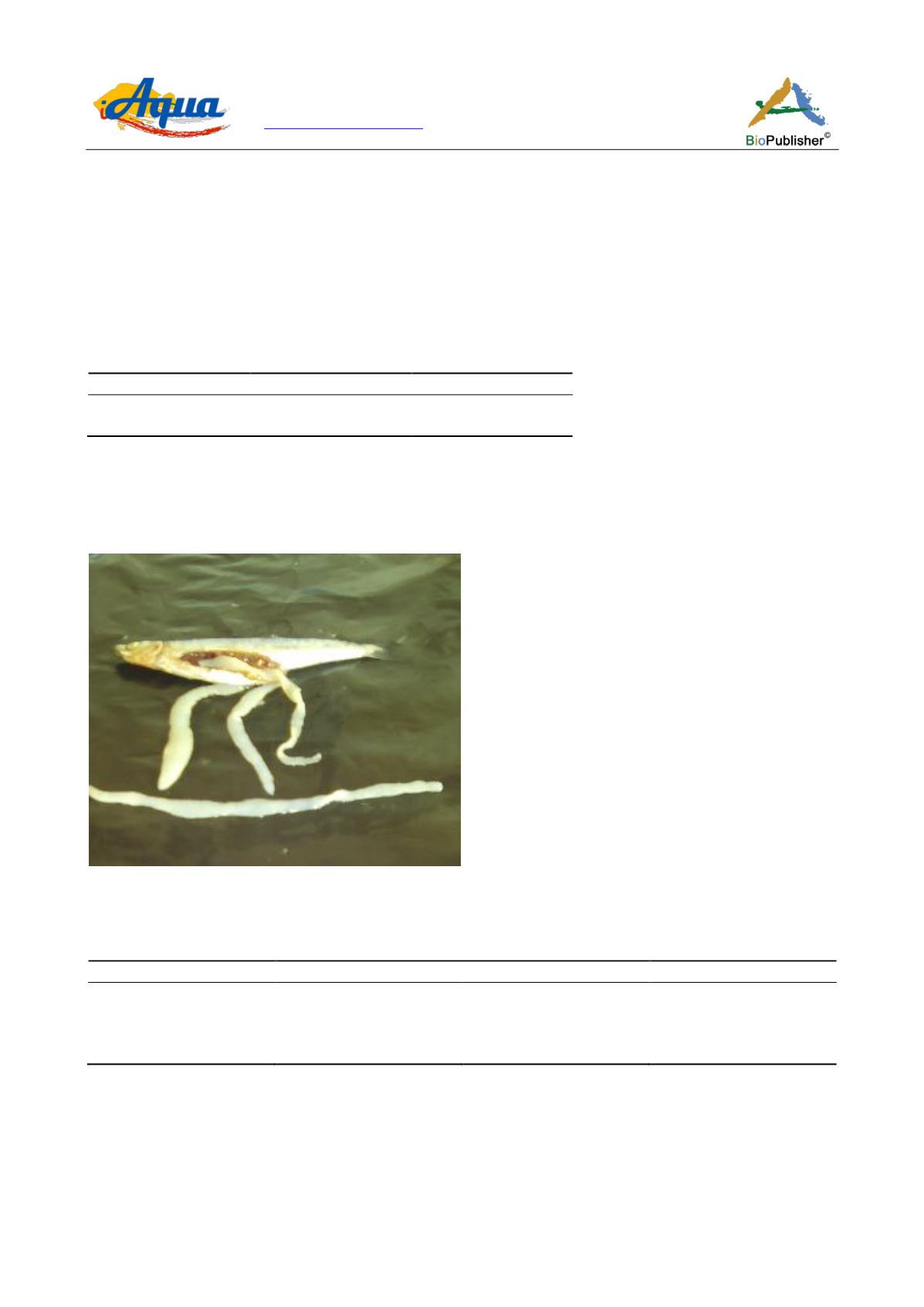
International Journal of Aquaculture, 2018, Vol.8, No.5, 29-37
31
1.3 Data analysis
The data obtained from the parasitic load determination was analyzed by F-test using SPSS statistical package
version 16.0 at 5% level of significance. Tukey HSD and Bonferroni Post Hoc multiple comparisons tests were
also conducted to verify the significance of the differences.
2 Results
The parasitic loads for the cold, dry and rainy seasons were determined. Seasonal variations on the parasitic load
were noted during the study period. Out of the two hundred sampled fish per season, only two classes of parasites
were observed. These are presented in the Table 1.
Table 1 Parasites and location in fresh
E. sardella
during cold, dry and rainy seasons
Parasite Class
Parasite Species
Site Located
Nematoda
Camallanus sp.
Gills
Cestoda
Ligula intestinalis
Gastrointestinal cavity
The two classes of parasites identified in
E. sardella
during the three seasons were cestoda and nematoda. The
cestoda species identified was
Ligula intestinalis
and the species of nematoda identified was the
Camallanus sp.
Ligula intestinalis
parasites were observed in the gastrointestinal cavity while the
Camallanus sp.
parasites were
observed on the gills.
Ligula intestinalis
parasites are shown in the Figure 2.
Figure 2
Ligula intestinalis
parasites from
E. sardella
gastrointestinal cavity
The seasonal parasitic loads are shown in the Table 2
Table 2 Parasitic loads of fresh
E. sardella
during cold, dry and rainy seasons
Season
Cestoda
Nematoda
Total
Cold season
0
0
0
Dry season
40
6
46
Rainy season
25
3
28
Total
65
9
74
Out of the two hundred sampled fish per season, no parasites were observed during the cold season. Instead,
parasites were observed during the dry and the rainy seasons. A total of 46 parasites were observed during the dry
season and a total of 28 parasites were observed during the rainy season. Out of the 46 parasites observed during
the dry season, 40 parasites were cestoda and 6 were nematoda. During the rainy season, 25 parasites were cestoda
and 3 were nematoda. This entails that 86.96% and 13.04% of the recovered parasites during the dry season were
cestoda and nematoda respectively. During the rainy season, cestoda comprised of 89.21% and nematoda
comprised of 10.79% of the total for the season. A total of 65 cestoda and 9 nematoda were recovered during all


